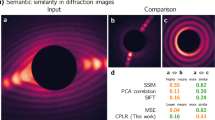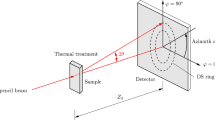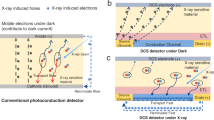Abstract
THE electrophotographic process of xerography1, initially described for the recording of optical images, has since received a considerable amount of attention with regard to its application in medical and industrial radiography2,3. The mechanism of image formation depends, primarily, on photoconductivity produced in a film of a black vitreous form of selenium by the incident radiation. To date, xerography has been used satisfactorily for recording images formed by visible light, ultra-violet radiation and X-rays. The observation, by Pensak, of induced conductivity in a thin film of amorphous selenium during electron bombardment4 suggested the possible application of xerography to the recording of electron images of the type produced in electron microscopes and electron diffraction cameras. During the course of an electron diffraction investigation of the structure of evaporated selenium films, some preliminary experiments of this kind have been carried out.
This is a preview of subscription content, access via your institution
Access options
Subscribe to this journal
Receive 51 print issues and online access
$199.00 per year
only $3.90 per issue
Buy this article
- Purchase on SpringerLink
- Instant access to full article PDF
Prices may be subject to local taxes which are calculated during checkout
Similar content being viewed by others
References
Schaffert, A. M., and Oughton, C. D., J. Opt. Soc. Amer., 38, 991 (1948).
McMaster, R. C., Non-destructive Testing, 10, 8 (1951).
Hills, T. H., Stanford, R. W., and Moore, R. D., Brit. J. Radiol., 28, 545 (1955).
Pensak, L., Phys. Rev., 79, 171 (1950).
Oliphant, W. D., Discovery, 14, 175 (1953).
Metcalfe, K. A., and Wright, R. J., J. Sci. Instr., 33, 194 (1956).
Author information
Authors and Affiliations
Rights and permissions
About this article
Cite this article
SEWELL, P. Electron-Image Recording by Xerography. Nature 179, 773–774 (1957). https://doi.org/10.1038/179773b0
Issue date:
DOI: https://doi.org/10.1038/179773b0



